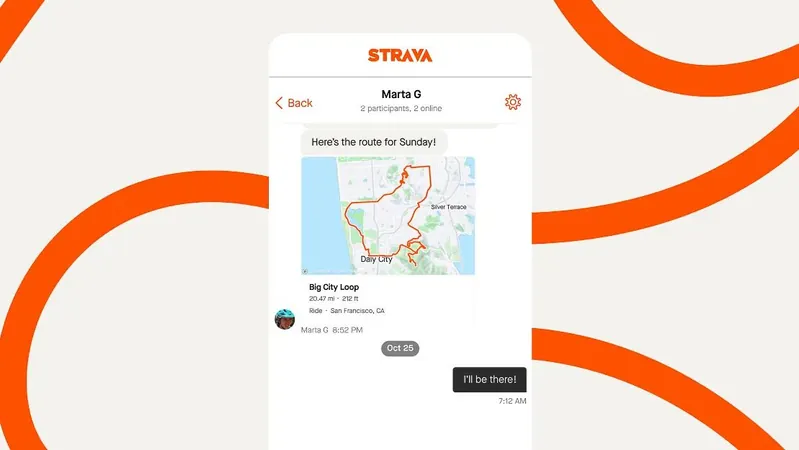
Strava's Game-Changing Privacy Policy: The End of Your Beloved Fitness Apps?
2024-11-20
Author: Michael
Major shifts are underway for Strava, the world's leading fitness-tracking platform, as the company rolls out an updated application programming interface (API) designed to bolster user privacy and data control. While Strava claims these enhancements aim to protect user information, many dedicated users will feel the impact as the app narrows its compatibility with third-party applications that utilize Strava’s API for data sharing, coaching, and performance analytics.
What's Changing in the Strava Landscape?
Strava’s API has long been a critical resource for hundreds of fitness apps, from well-known giants like Garmin, Wahoo, TrainerRoad, and Xert to numerous smaller applications. This API has become a central hub for millions of athletes' training data and progress. The upcoming changes in the API agreement focus on three pivotal aspects:
1. Enhanced Privacy Measures
Strava will ensure that user data will only be displayed in scenarios where sharing is clear and directly tied to Strava's features, such as when users choose to share their workouts or races on social media.
2. Data Usage Limitations
The new restrictions will prohibit third-party apps from utilizing artificial intelligence (AI) or performing analytics on Strava user data. This means that applications like Xert and Final Surge—which have historically provided rich analytics based on Strava data—will have to adjust their offerings substantially.
3. Data Control Revisions
By limiting the ability of third-party apps to display user data beyond individual needs, Strava aims to maintain singular control over the data uploaded to user profiles, thus minimizing the chances of unintended data exposure.
What This Means for Third-Party Apps
These changes can spell disaster for coaching and analytics platforms reliant on Strava data for delivering tailored performance insights and coaching communication. As a result of the new API terms, the ability to share data with coaches or third-party users will vanish and these platforms will no longer be able to employ data analytics or AI to analyze user performance.
Navigating the Strava Ecosystem
For many avid Strava users, the platform serves as the connective tissue linking a variety of devices and applications, seamlessly collating data in one location. While prominent device manufacturers like Garmin and Wahoo maintain their own direct integrations, lesser-known applications that depend on Strava’s API for functionality will be significantly affected.
What Should You Do About Your Strava Profile?
Though the changes are designed to enhance data privacy and user control, athletes depending on third-party applications for coaching, feedback, or analytics will need to seek alternative solutions to fill the gaps left by these policy updates. Direct integrations will remain intact for users with devices from larger brands like Wahoo and Garmin, but those using smaller or less recognizably integrated devices—such as Fitbit, Samsung, or Google Pixel Watch—might encounter significant hurdles in maintaining consistent access to similar services.
The big question remains: What will the future hold for the millions of athletes who rely on Strava and its ecosystem of fitness apps? As these changes take effect, it’s crucial for users to stay informed and adapt to the evolving landscape—after all, your fitness journey is just getting started, and you don’t want to be left in the dust!









 Brasil (PT)
Brasil (PT)
 Canada (EN)
Canada (EN)
 Chile (ES)
Chile (ES)
 España (ES)
España (ES)
 France (FR)
France (FR)
 Hong Kong (EN)
Hong Kong (EN)
 Italia (IT)
Italia (IT)
 日本 (JA)
日本 (JA)
 Magyarország (HU)
Magyarország (HU)
 Norge (NO)
Norge (NO)
 Polska (PL)
Polska (PL)
 Schweiz (DE)
Schweiz (DE)
 Singapore (EN)
Singapore (EN)
 Sverige (SV)
Sverige (SV)
 Suomi (FI)
Suomi (FI)
 Türkiye (TR)
Türkiye (TR)